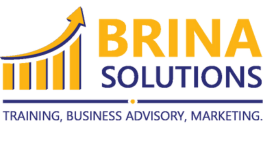
Launching a new product is an exciting yet challenging moment for any business. A successful product launch can generate buzz, attract customers, and position your brand as an industry leader. However, without the right strategy, even the best products can go unnoticed.
In this guide, we’ll walk you through the essential steps to plan a product launch that captivates your audience and drives sales.
1. Define Your Product Launch Goals
Before you dive into planning, identify what you want to achieve with your product launch. Your goals will shape your marketing strategy and help you measure success.
Common Product Launch Goals:
✅ Generate brand awareness
✅ Drive pre-orders or initial sales
✅ Attract new customers and retain existing ones
✅ Establish credibility and authority in your industry
✅ Gather feedback for future improvements
Pro Tip: Set SMART goals—Specific, Measurable, Achievable, Relevant, and Time-bound—to ensure your launch strategy is clear and focused.
2. Understand Your Target Audience
A product launch is only effective if it resonates with the right audience. Conduct thorough market research to understand:
- Who your ideal customers are (age, interests, purchasing habits)
- What problems they face that your product can solve
- Where they spend their time online (social media, blogs, forums)
- How they prefer to consume information (videos, articles, podcasts)
Example: If launching a skincare product, your audience might be beauty enthusiasts who engage with Instagram influencers and watch skincare tutorials on YouTube.
Pro Tip: Create buyer personas to tailor your marketing messages for maximum impact.
3. Build Pre-Launch Buzz
Don’t wait until launch day to start talking about your product—hype it up early! Pre-launch marketing builds excitement and anticipation.
Effective Pre-Launch Strategies:
🚀 Teaser Campaigns: Share sneak peeks on social media, hinting at what’s coming.
🚀 Behind-the-Scenes Content: Show the product development process or introduce the team behind it.
🚀 Exclusive Access: Offer early access or pre-orders to your email subscribers.
🚀 Influencer & Partner Collaborations: Have influencers or industry experts test and talk about your product before launch.
Example: Apple builds hype months before launching a new iPhone by leaking features and letting tech reviewers test devices early.
Pro Tip: Use countdown timers on your website or social media to create urgency.
4. Create a Compelling Product Story
Your product’s success isn’t just about features—it’s about the story behind it. A compelling story makes your product relatable and memorable.
Elements of a Strong Product Story:
📌 The Problem: What challenge does your product solve?
📌 The Inspiration: Why did you create it?
📌 The Solution: How does it improve your customers’ lives?
📌 The Proof: Testimonials, case studies, or beta testing results.
Example: Nike doesn’t just sell shoes—they sell motivation and empowerment through storytelling in their marketing.
Pro Tip: Use emotional appeal in your messaging to connect with your audience on a deeper level.
5. Leverage Multi-Channel Marketing
To maximize reach, use a combination of online and offline marketing channels for your product launch.
Best Channels for Product Launches:
📢 Social Media: Instagram, TikTok, LinkedIn, Twitter—platforms where your audience is active.
📢 Email Marketing: Send exclusive updates and early access deals to your email list.
📢 Content Marketing: Publish blog posts, videos, or case studies explaining the product’s benefits.
📢 Paid Advertising: Use Facebook Ads, Google Ads, or influencer sponsorships for wider exposure.
📢 PR & Media Coverage: Pitch your story to industry publications, blogs, and news outlets.
Example: Tesla uses viral social media campaigns and CEO Elon Musk’s personal Twitter presence to generate massive interest before a car launch.
Pro Tip: Run A/B tests on different ad creatives and messaging to determine what resonates best.
6. Plan an Engaging Product Launch Event
A launch event creates excitement, encourages real-time interactions, and makes your product debut feel special.
Types of Launch Events:
🎉 Virtual Events: Webinars, live Q&A sessions, or product demos on Instagram Live, YouTube, or Zoom.
🎉 In-Person Events: Pop-up experiences, launch parties, or media meet-ups.
🎉 Exclusive Unboxing Experiences: Send PR kits to influencers for unboxing videos.
Example: Samsung livestreams its Galaxy Unpacked events to millions of viewers worldwide, creating hype for new product releases.
Pro Tip: Encourage attendees to share their experience on social media using a branded hashtag.
7. Offer Promotions & Incentives
Give customers a reason to buy immediately by offering launch-day deals.
Effective Promotional Strategies:
💰 Limited-Time Discounts: Offer early bird pricing or bundle deals.
🎁 Freebies & Add-Ons: Include a free gift or bonus with first purchases.
🌟 Referral Programs: Reward customers who refer friends.
🔥 Exclusive Memberships: Offer VIP perks to early adopters.
Example: E-commerce brands often use “launch-only” discount codes to create urgency and drive initial sales.
Pro Tip: Use scarcity tactics like “Only 50 spots available!” to boost conversions.
8. Gather & Showcase Social Proof
Consumers trust peer recommendations more than traditional advertising. Showcasing social proof builds credibility.
How to Leverage Social Proof:
✅ Customer Reviews & Testimonials: Feature them on your website and social media.
✅ User-Generated Content: Encourage customers to share their experience using your product.
✅ Media Mentions: Highlight press coverage or influencer endorsements.
Example: Amazon products with high ratings and positive reviews consistently outperform those with little feedback.
Pro Tip: Offer a small incentive (like a discount on the next purchase) in exchange for customer reviews.
9. Monitor Performance & Optimize Strategy
Once your product is live, track performance and adjust your marketing strategy based on data insights.
Key Metrics to Track:
📊 Website Traffic & Conversion Rates – Are people visiting your product page and making purchases?
📊 Social Media Engagement – Are people talking about your launch?
📊 Sales & Revenue Growth – How many units have you sold?
📊 Customer Feedback – What are people saying about your product?
Pro Tip: Use tools like Google Analytics, Facebook Insights, and email marketing reports to measure success.
10. Maintain Post-Launch Momentum
A successful product launch isn’t just about launch day—it’s about sustaining interest long-term.
Ways to Keep Your Product Relevant:
🚀 Consistent Content Marketing: Continue posting blogs, videos, and social media updates.
🚀 Seasonal Promotions: Offer special deals during holidays or events.
🚀 Loyalty Programs: Reward repeat customers with exclusive offers.
🚀 Product Updates & Expansions: Introduce new features or complementary products.
Example: Apple doesn’t stop marketing iPhones after launch. They continuously release software updates, accessories, and new ad campaigns.
Pro Tip: Keep engaging with your audience to turn first-time buyers into long-term customers.
Final Thoughts: Make Your Product Launch Unforgettable
A well-planned product launch can elevate your brand, boost sales, and create lasting excitement. By following these steps, you can ensure your product reaches the right audience and achieves long-term success.
Want Expert Help with Your Product Launch?
At Brina Solutions, we specialize in:
✅ Launch strategy development
✅ Social media promotions & influencer marketing
✅ Product demo videos & email marketing campaigns
✅ PR outreach & event planning
📩 Contact us today at consult@brinasolutions.com or call +254 728 624 200! Let’s make your next product launch a success.







Leave a Reply